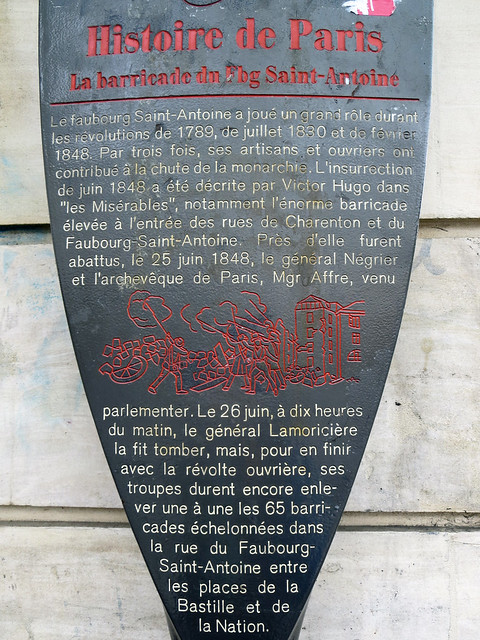La barricade du Fbg Saint-Antoine. Le faubourg Saint-Antoine a joué un grand rôle durant les révolutions de 1789, de juillet 1830 et de février 1848. Par trois fois, ses artisans et ouvriers ont contribué à la chute de la monarchie. L'insurrection de juin 1848 a été décrite par Victor Hugo dans "les Misérables", notamment l'énorme barricade élevée à l'entrée des rues de Charenton et du Faubourg-Saint-Antoine. Près d'elle furent abattus, le 25 juin 1848, le général Négrier et l'archevêque de Paris, Mgr Affre, venu parlementer. Le 26 juin, à dis heures du matin, le général Lamoricière la fit tomber, mais, pour en finir avec la révolte ouvrière, ses troupes durent encore enlever une à une les 65 barricades échelonnées dans la rue du Faubourg-Saint-Antoine entre les places de la Bastille et de la Nation.
rue de Faubourg Saint Antoine, at the corner of the Place de la Bastille, Paris
Google Streetview
OpenStreetMap
Subjects
None identified yet. Subjects are curated by hand so please bear with us.

